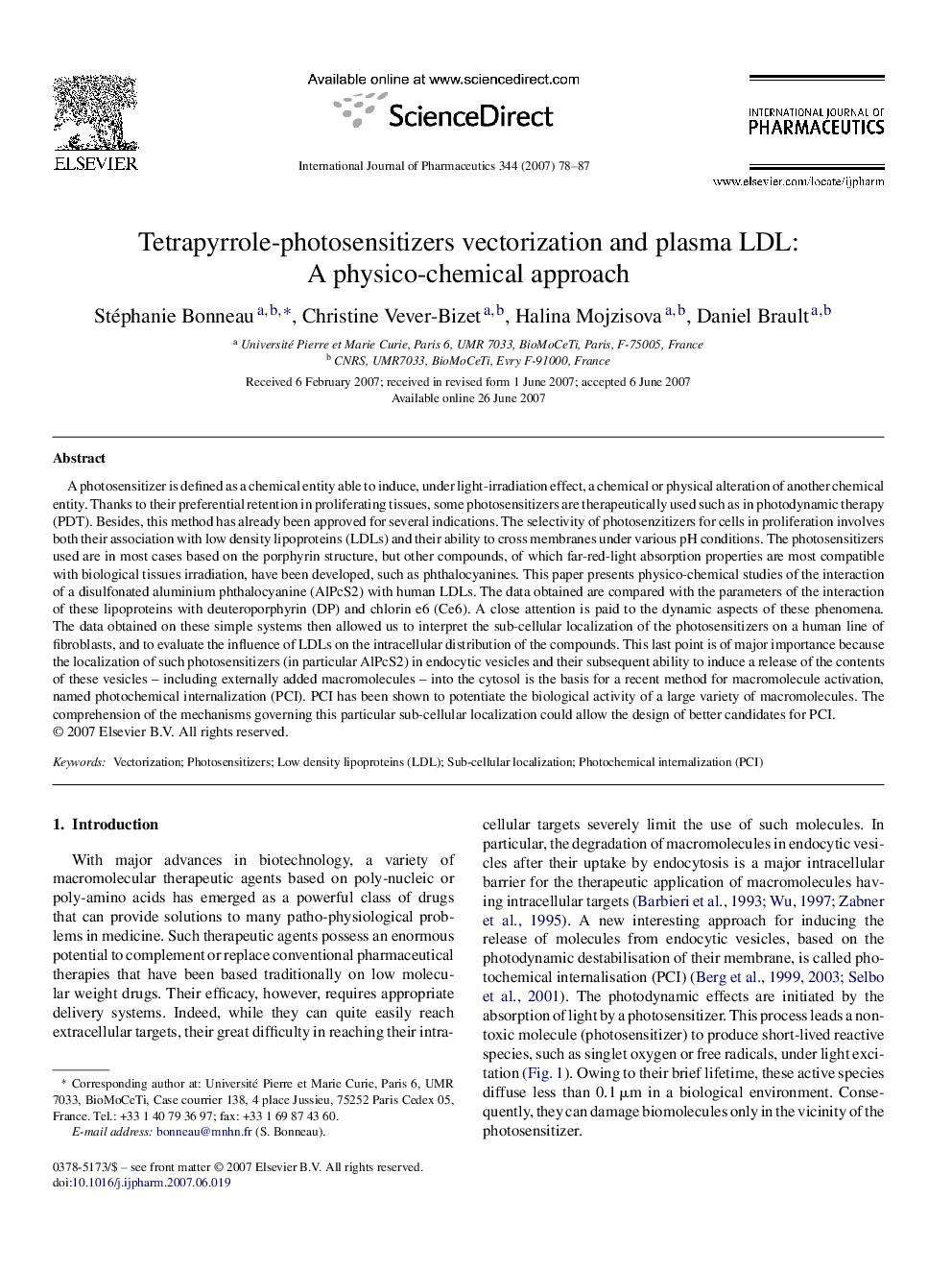| کد مقاله | کد نشریه | سال انتشار | مقاله انگلیسی | نسخه تمام متن |
|---|---|---|---|---|
| 2505851 | 1557502 | 2007 | 10 صفحه PDF | دانلود رایگان |

A photosensitizer is defined as a chemical entity able to induce, under light-irradiation effect, a chemical or physical alteration of another chemical entity. Thanks to their preferential retention in proliferating tissues, some photosensitizers are therapeutically used such as in photodynamic therapy (PDT). Besides, this method has already been approved for several indications. The selectivity of photosenzitizers for cells in proliferation involves both their association with low density lipoproteins (LDLs) and their ability to cross membranes under various pH conditions. The photosensitizers used are in most cases based on the porphyrin structure, but other compounds, of which far-red-light absorption properties are most compatible with biological tissues irradiation, have been developed, such as phthalocyanines. This paper presents physico-chemical studies of the interaction of a disulfonated aluminium phthalocyanine (AlPcS2) with human LDLs. The data obtained are compared with the parameters of the interaction of these lipoproteins with deuteroporphyrin (DP) and chlorin e6 (Ce6). A close attention is paid to the dynamic aspects of these phenomena. The data obtained on these simple systems then allowed us to interpret the sub-cellular localization of the photosensitizers on a human line of fibroblasts, and to evaluate the influence of LDLs on the intracellular distribution of the compounds. This last point is of major importance because the localization of such photosensitizers (in particular AlPcS2) in endocytic vesicles and their subsequent ability to induce a release of the contents of these vesicles – including externally added macromolecules – into the cytosol is the basis for a recent method for macromolecule activation, named photochemical internalization (PCI). PCI has been shown to potentiate the biological activity of a large variety of macromolecules. The comprehension of the mechanisms governing this particular sub-cellular localization could allow the design of better candidates for PCI.
Journal: International Journal of Pharmaceutics - Volume 344, Issues 1–2, 1 November 2007, Pages 78–87